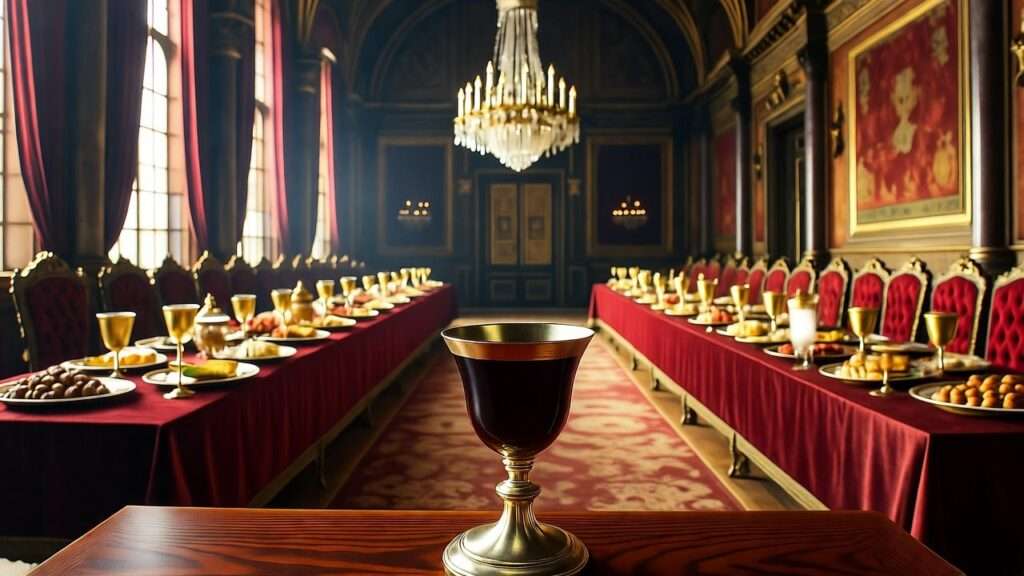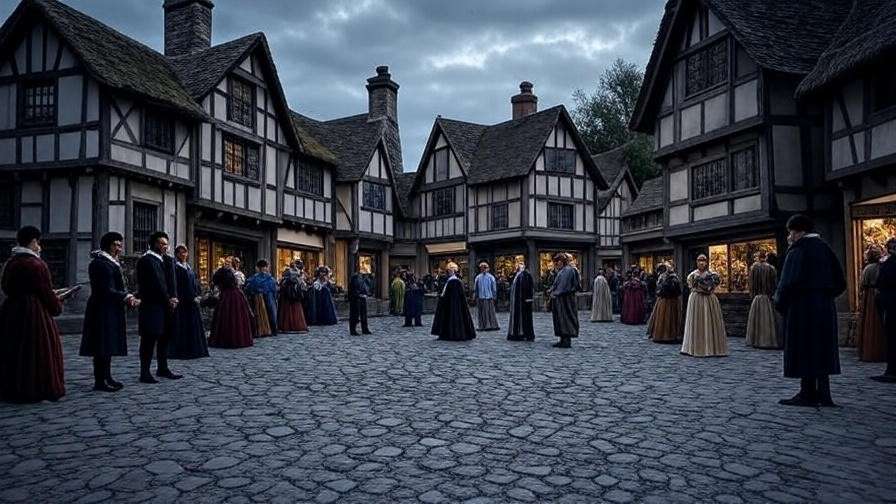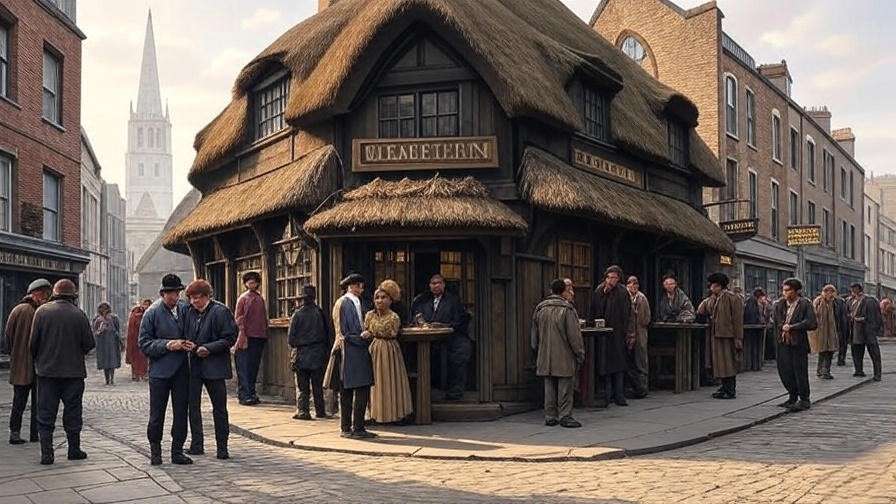Imagine a grand Danish hall, tables groaning under the weight of roasted meats, goblets brimming with wine, and a king toasting to a new marriage while shadows of betrayal linger in the air. In William Shakespeare’s Hamlet, food is more than mere sustenance—it’s a window into the soul of the play. The concept of Hamlet’s kitchen unveils a rich tapestry of symbolism, where feasts and poisoned chalices mirror the moral decay, political intrigue, and psychological turmoil of Denmark’s court. Why does Shakespeare weave food imagery into this tragedy? This article dives deep into Hamlet’s kitchen, exploring how culinary references reveal hidden meanings, offering readers, students, and scholars a fresh lens to appreciate this masterpiece. Drawing on Elizabethan cultural insights, literary analysis, and expert scholarship, we’ll uncover the profound significance of food in Hamlet and why it resonates today.
The Role of Food in Shakespeare’s World
Food as a Cultural Mirror in Elizabethan England
In Elizabethan England, food was a powerful symbol of status, hospitality, and morality. Lavish banquets showcased wealth, while sparse meals reflected poverty or piety. According to historian Ian Mortimer, feasts in the 16th century were “public performances of power,” where the host’s generosity—or manipulation—was on display. In Hamlet, Shakespeare uses this cultural backdrop to craft Hamlet’s kitchen as a stage for Denmark’s political and moral tensions. The Danish court’s opulent feasts, for instance, parallel Elizabethan royal banquets, where food was both a diplomatic tool and a potential mask for deceit. Understanding this context helps readers grasp how Shakespeare uses food to reflect the social hierarchy and underlying corruption in Hamlet.
Shakespeare’s Use of Food Across His Works
Food imagery is a recurring motif in Shakespeare’s plays, each instance tailored to the narrative’s themes. In Macbeth, the disrupted banquet scene underscores guilt and chaos, while Titus Andronicus turns a feast into a grotesque act of revenge. In Hamlet, however, food symbolism is subtler, woven into the psychological and moral fabric of the play. Scholar Harold Bloom notes that Shakespeare’s use of food in Hamlet “reflects the characters’ inner states, from excess to deprivation.” Unlike the overt horror of Titus, Hamlet’s culinary references—like poisoned wine or “funeral baked meats”—are understated yet piercing, revealing the rot beneath Denmark’s polished surface.
Food Symbolism in Hamlet: Key Scenes and Their Meanings
The Opening Banquet and the Facade of Celebration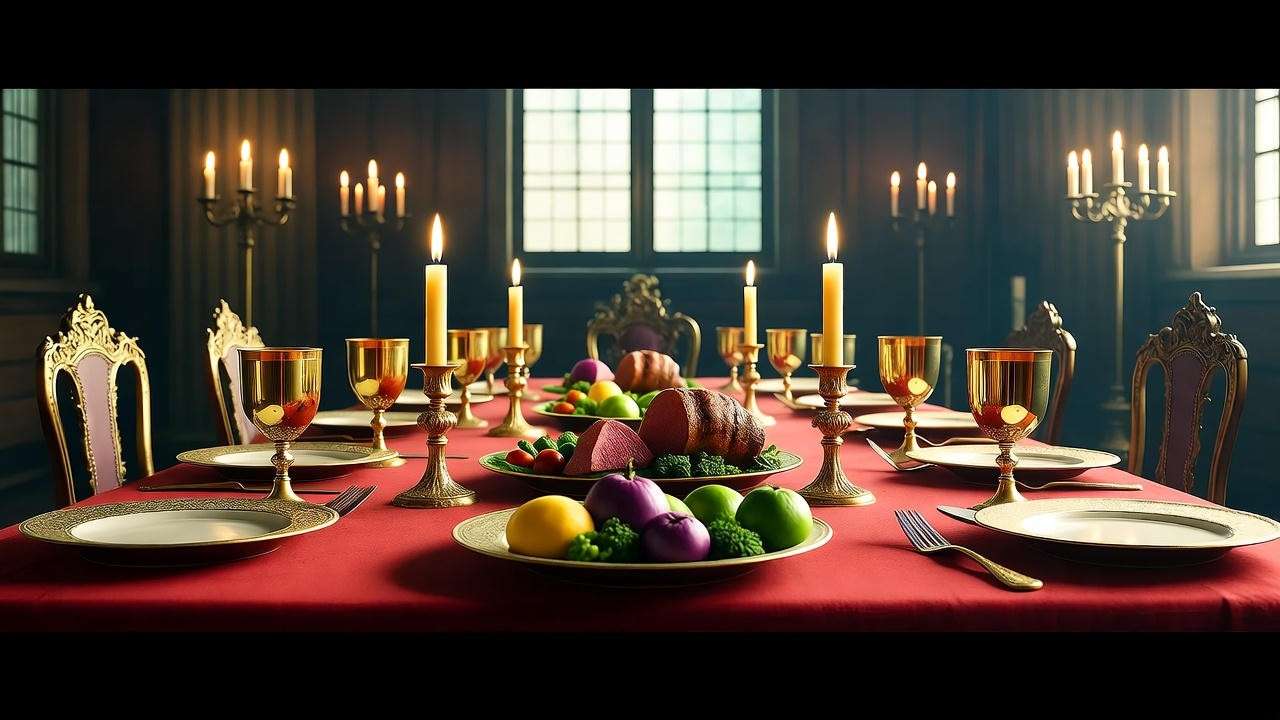
In Act 1, Scene 2, Claudius hosts a grand feast to celebrate his coronation and marriage to Gertrude, a scene dripping with forced merriment. The tables are laden with food and drink, but the excess cloaks a darker truth: Claudius’ usurpation of the throne and his hasty marriage to his brother’s widow. As scholar A.C. Bradley observes, “Claudius’ banquet is a calculated display of legitimacy, yet it betrays his moral bankruptcy.” The food, meant to symbolize unity and abundance, instead highlights the fracture in Denmark’s royal family. For readers, this scene sets the tone for Hamlet’s kitchen as a place where appearances deceive, and sustenance masks betrayal.
The “Funeral Baked Meats” and Moral Corruption
One of the most striking food references in Hamlet comes from the prince himself: “Thrift, thrift, Horatio! The funeral baked meats / Did coldly furnish forth the marriage tables” (Act 1, Scene 2). This biting remark refers to the reuse of food from King Hamlet’s funeral for Claudius and Gertrude’s wedding feast, a scandalously short time later. The phrase “funeral baked meats” evokes images of cold, leftover pies, symbolizing not just thrift but a grotesque blending of death and celebration. Literary critic Stephen Greenblatt argues this line “captures Hamlet’s disgust at the violation of natural boundaries—life and death, grief and joy.” The tainted food becomes a metaphor for moral decay, as Gertrude’s remarriage and Claudius’ reign spoil the purity of Denmark’s past.
Poisoned Wine and Betrayal
In the climactic Act 5, Scene 2, food and drink take a deadly turn with the poisoned chalice intended for Hamlet. Wine, a symbol of communion and trust in Elizabethan culture, becomes a tool of treachery in Claudius’ hands. The poisoned cup, meant to kill Hamlet, instead claims Gertrude and others, underscoring the pervasive corruption in Denmark. This scene echoes historical fears of poisoning in Renaissance courts, where food and drink were often vehicles for assassination. As scholar Marjorie Garber notes, “The poisoned wine in Hamlet transforms a symbol of fellowship into one of betrayal, encapsulating the play’s tragic arc.” This moment in Hamlet’s kitchen reveals how sustenance can become a weapon, reflecting the fragility of trust.
Starvation and Absence of Sustenance
While Hamlet features lavish feasts and poisoned drinks, it also emphasizes the absence of nourishing food, mirroring the characters’ emotional and spiritual starvation. Hamlet’s famous line, “I eat the air, promise-crammed” (Act 3, Scene 2), suggests a hunger that no physical food can satisfy. This deprivation contrasts with the excesses of Claudius’ court, highlighting the prince’s existential crisis. The lack of wholesome sustenance in Hamlet’s kitchen symbolizes the moral and emotional void in Denmark, where betrayal and deceit leave no room for genuine nourishment. For readers, this absence invites reflection on the deeper hungers— for truth, justice, and meaning—that drive the play’s tragedy.
Psychological and Thematic Implications of Food Symbolism
Food as a Lens for Hamlet’s Inner Turmoil
Food imagery in Hamlet serves as a powerful lens for the prince’s psychological state. His references to decay, such as “Something is rotten in the state of Denmark” (Act 1, Scene 4), align with the tainted food of Hamlet’s kitchen. The spoiled “baked meats” and poisoned wine mirror Hamlet’s disgust with the world around him, particularly his mother’s remarriage and Claudius’ treachery. Scholar Elaine Showalter suggests that “Hamlet’s fixation on corruption reflects a visceral revulsion, as if the world itself were indigestible.” By analyzing food symbolism, readers can better understand Hamlet’s internal conflict, where his hunger for justice clashes with the moral decay he perceives.
Social Hierarchy and Power Dynamics
Food in Hamlet also reflects the social and political hierarchies of the Danish court. Elizabethan dining customs dictated that the host controlled the distribution of food, signaling power and generosity. In Hamlet, Claudius uses feasts to assert his authority, but the underlying deceit undermines his legitimacy. For example, the opening banquet reinforces his claim to the throne, yet Hamlet’s “funeral baked meats” quip exposes the sham. This dynamic mirrors Elizabethan anxieties about social order, where food distribution often highlighted class divisions. By examining Hamlet’s kitchen, readers gain insight into how Shakespeare critiques power structures through culinary symbolism.
Gender and Food: Gertrude and Ophelia
Food imagery in Hamlet also carries gendered implications. Gertrude, associated with the marriage feast, is complicit in the moral corruption symbolized by the “funeral baked meats.” Her role as queen ties her to the hospitality of Hamlet’s kitchen, yet her actions blur the lines between nurturer and betrayer. Ophelia, by contrast, is linked to natural imagery, such as flowers, which serve as a form of symbolic sustenance in her descent into madness. Feminist critic Elaine Showalter argues that “food and flowers in Hamlet reflect the limited agency of its female characters, trapped in a world of male ambition.” This gendered lens enriches our understanding of how Hamlet’s kitchen intersects with power and identity.
Cultural and Historical Context of Hamlet’s Kitchen
Danish Culinary Traditions in Shakespeare’s Imagination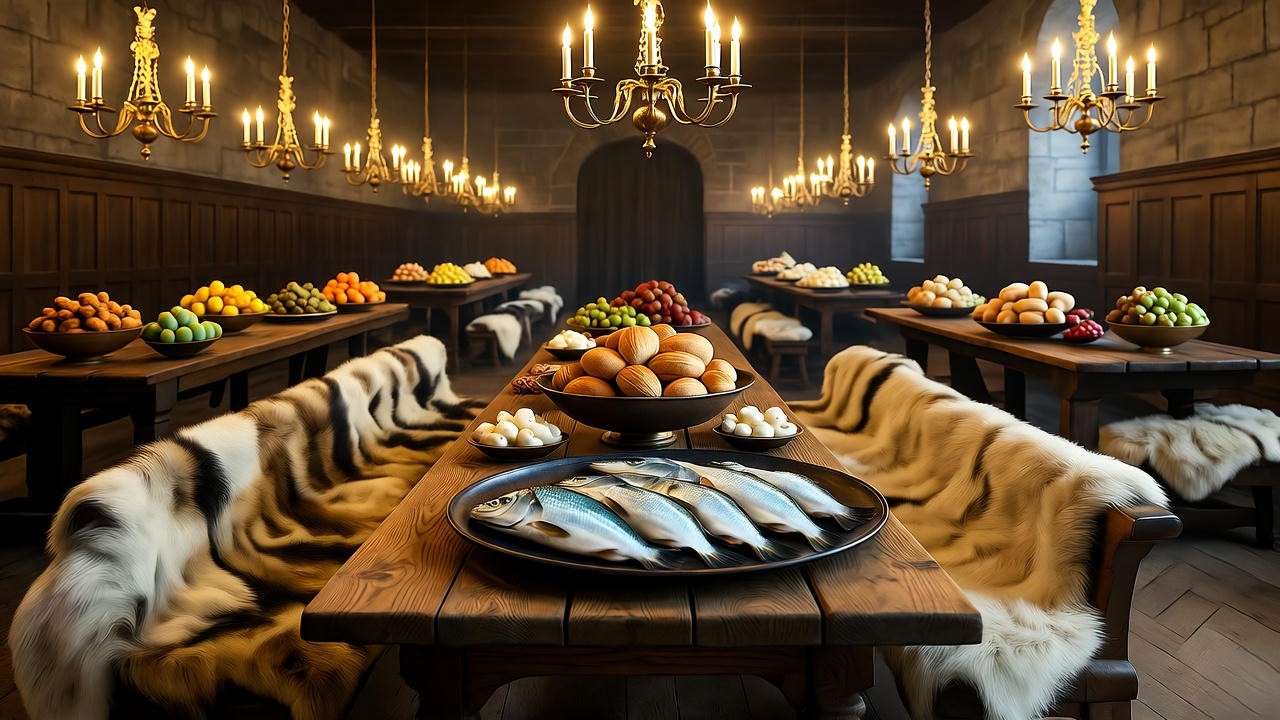
While Hamlet is set in Denmark, Shakespeare’s depiction of Hamlet’s kitchen draws more from his Elizabethan imagination than from historical Danish cuisine. In the 16th century, Scandinavian feasts often featured hearty fare like roasted meats, fish, and ale, reflecting a culture of communal dining. However, Shakespeare, writing for an English audience, likely infused Hamlet with familiar Elizabethan dining customs, such as lavish banquets symbolizing royal power. Historian Ken Albala notes that Renaissance playwrights often used food to evoke “universal themes of excess and betrayal,” adapting foreign settings to resonate with local audiences. In Hamlet, the opulent feasts of Claudius’ court contrast with the moral decay beneath, a dramatic choice that prioritizes thematic depth over historical accuracy. This blend of fact and fiction makes Hamlet’s kitchen a compelling lens for exploring Shakespeare’s craft.
Food as a Universal Symbol in Literature
Food symbolism transcends Hamlet, appearing in literary traditions from biblical narratives to classical Greek epics. In the Bible, bread and wine symbolize communion and sacrifice, themes echoed in Hamlet’s poisoned chalice. Similarly, Greek tragedies like The Odyssey use feasts to explore hospitality and deception, paralleling Claudius’ manipulative banquets. By situating Hamlet’s kitchen within this broader literary context, we see how Shakespeare draws on universal symbols to amplify his themes. Scholar Marjorie Garber emphasizes that “food in literature is a bridge between the physical and metaphysical,” a concept vividly realized in Hamlet’s interplay of sustenance and betrayal. This perspective enriches our understanding of the play’s enduring relevance.
Practical Applications for Readers and Scholars
Enhancing Your Reading of Hamlet
To fully appreciate Hamlet’s kitchen, readers can actively engage with the play’s food imagery. Start by noting every mention of food or drink, from the “funeral baked meats” to the poisoned wine, and consider their emotional or thematic context. For example, when Hamlet speaks of eating “the air, promise-crammed,” reflect on how this reflects his unfulfilled desires. A practical tip is to read Hamlet alongside a journal, jotting down how food references align with character motivations or plot developments. This approach not only deepens your understanding but also makes the play’s complex themes more accessible. For theatergoers, watching a production with an eye for staging—such as how directors visualize feasts—can further illuminate Hamlet’s kitchen.
Teaching Hamlet’s Kitchen in the Classroom
Educators can bring Hamlet’s kitchen to life in the classroom through creative and analytical exercises. One idea is a discussion prompt: “How does food in Hamlet reflect the characters’ moral choices?” Encourage students to cite specific scenes, like the opening banquet or the poisoned chalice, to support their arguments. Another engaging assignment is a creative writing task where students rewrite a scene from Hamlet, incorporating new food imagery to emphasize a theme like betrayal or excess. For example, a student might describe a feast where spoiled fruit symbolizes Denmark’s decay. These activities, grounded in textual analysis, help students connect Hamlet’s food symbolism to broader literary and cultural themes, fostering critical thinking.
Food Symbolism in Modern Productions
Modern productions of Hamlet often amplify food imagery to resonate with contemporary audiences. In Kenneth Branagh’s 1996 film, the banquet scenes are opulent yet tense, with close-ups on goblets and plates underscoring the underlying deceit. Similarly, Gregory Doran’s 2009 RSC production uses stark lighting during the final duel to highlight the poisoned wine as a symbol of doom. Directors’ notes from these productions reveal a deliberate focus on Hamlet’s kitchen to convey themes of betrayal and corruption. For instance, Branagh has noted that “the excess of Claudius’ feasts mirrors his moral overreach.” By studying these interpretations, readers and theater enthusiasts can see how Hamlet’s food symbolism remains a dynamic tool for storytelling today.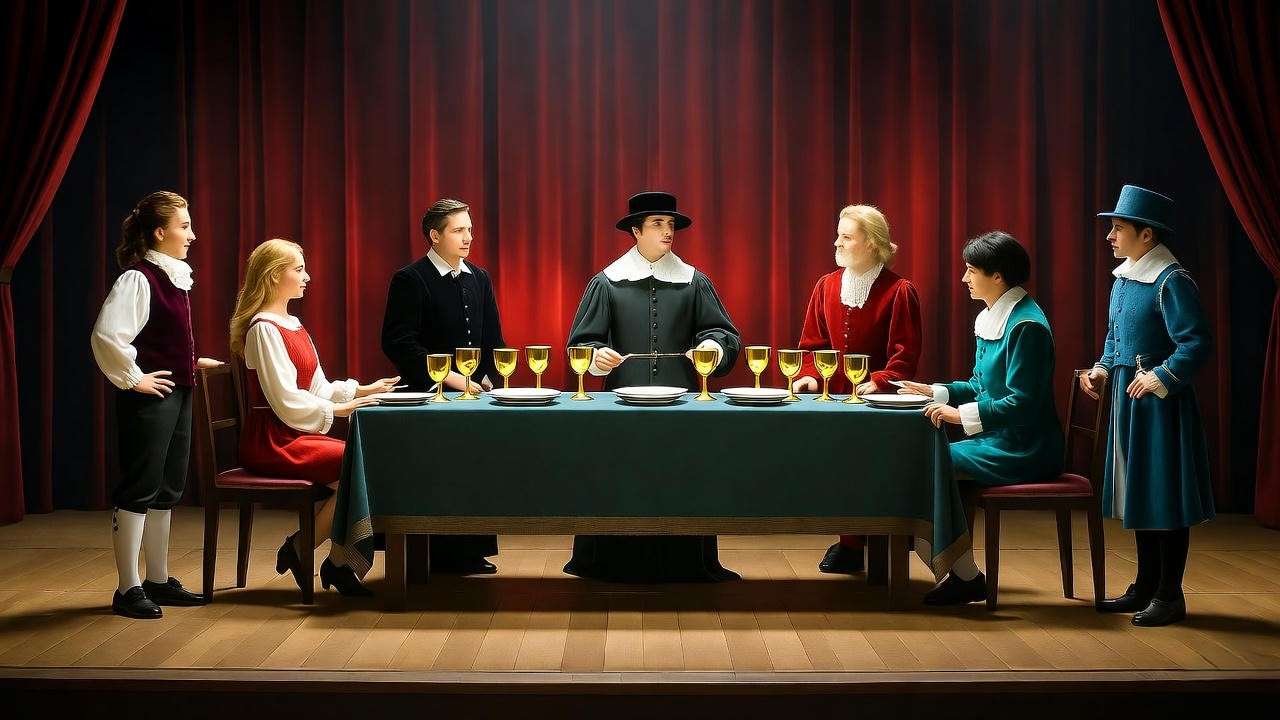
Why Hamlet’s Kitchen Matters Today
Why does Hamlet’s kitchen, a 400-year-old literary device, still captivate modern audiences? Food remains a universal language, reflecting themes of trust, betrayal, and survival that resonate across time. In today’s world, where food insecurity affects millions and political scandals echo Claudius’ deceit, Hamlet’s culinary imagery feels strikingly relevant. The poisoned chalice, for instance, parallels modern concerns about hidden dangers in what we consume—whether literal or metaphorical. Moreover, analyzing Hamlet’s kitchen fosters critical thinking, encouraging readers to question appearances and seek deeper truths. As scholar Stephen Greenblatt argues, “Shakespeare’s symbols endure because they speak to human experiences that never fade.” By exploring Hamlet’s food imagery, we gain insights into our own world, from power dynamics to personal betrayals.
Hamlet’s kitchen is more than a backdrop—it’s a powerful lens for understanding the psychological, social, and political layers of Shakespeare’s tragedy. From the deceptive opulence of Claudius’ banquets to the poisoned wine that seals Denmark’s fate, food symbolism reveals the rot beneath the surface of the Danish court. By examining scenes like the “funeral baked meats” and Hamlet’s hunger for truth, we uncover hidden meanings that enrich our reading of the play. Whether you’re a student, scholar, or theater enthusiast, revisiting Hamlet with an eye for its culinary imagery offers a fresh perspective on this timeless work. Dive into the text or catch a production, noting how food shapes the story, and share your insights below. Hamlet’s kitchen awaits your exploration.
FAQs
What does “funeral baked meats” mean in Hamlet?
The phrase “funeral baked meats” (Act 1, Scene 2) refers to food, likely pies, prepared for King Hamlet’s funeral and reused for Claudius and Gertrude’s wedding. Symbolically, it represents the unnatural haste of the remarriage and the moral decay of blurring grief with celebration.
How does food symbolism differ between Hamlet and other Shakespeare plays?
Unlike the overt horror of Titus Andronicus’ cannibalistic feast or Macbeth’s disrupted banquet, Hamlet’s food imagery is subtle, focusing on psychological and moral corruption through references like poisoned wine and sparse sustenance.
Can food imagery in Hamlet be applied to modern literary analysis?
Yes, analyzing Hamlet’s food symbolism offers insights into themes like betrayal and power, applicable to contemporary literature and media. Scholars can use this lens to explore how modern narratives use food to convey deeper meanings.
Are there historical records of feasts in Hamlet’s Denmark?
While Shakespeare’s Denmark is fictionalized, historical records of Scandinavian feasts suggest hearty communal meals. Shakespeare likely drew on Elizabethan dining customs to craft Hamlet’s kitchen, prioritizing dramatic effect over historical precision.

